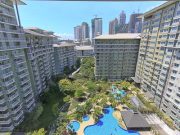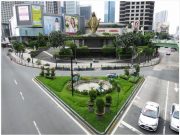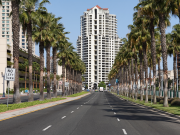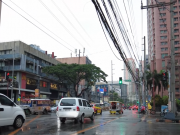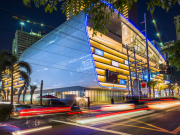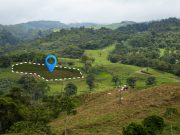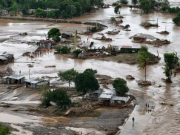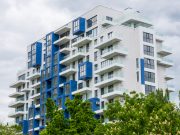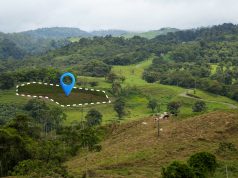The relentless growth of Metro Manila has brought undeniable progress, but it has also presented significant challenges. Traffic congestion crawls through the streets, pollution hangs heavy in the air, and the cost of living continues to climb. As the metropolis strains under its weight, a new vision for urban development is taking shape: the rise of mixed-use developments and townships outside Metro Manila.
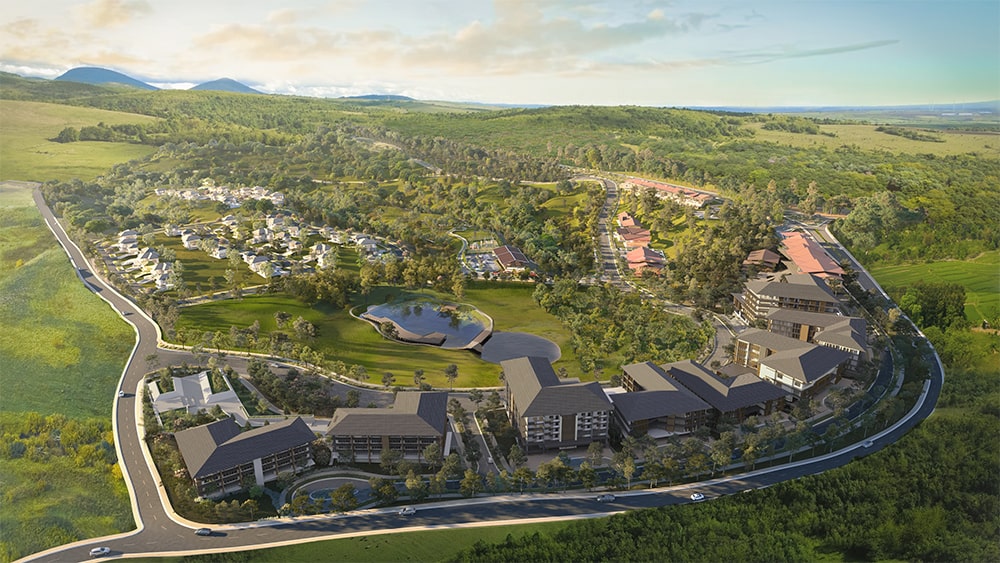
These self-contained communities offer a holistic approach to living, integrating residential spaces, commercial districts, offices, and recreational facilities within a single, well-planned area. Imagine a vibrant environment where you can live, work, and unwind without long commutes. This is the promise of mixed-use developments, and it’s a vision that’s rapidly transforming cities and regions across the Philippines.
A confluence of factors drives the trend toward decentralization. The government actively promotes economic diversification and decongestion, encouraging businesses and residents to explore opportunities beyond Metro Manila. These outlying areas are becoming more appealing, and accessible thanks to improved infrastructure, such as new roads and airports. Most importantly, Filipinos increasingly aspire to a better quality of life, balancing work, leisure, and a connection to nature. Mixed-use developments cater to this desire by offering a complete and convenient lifestyle package.
This article explores the fascinating world of mixed-use developments and townships outside Metro Manila. We’ll explore key projects spearheaded by leading developers in regions like Pampanga, Bulacan, Rizal, Cavite, Laguna, and Batangas. We’ll examine the factors driving this decentralization movement and analyze the opportunities and challenges ahead. By the end of this journey, you’ll gain a deeper understanding of how these innovative developments are reshaping Philippine cities and establishing vibrant new urban centers.
The Rise of Decentralization: Key Drivers
The burgeoning landscape of mixed-use developments outside Metro Manila isn’t a random phenomenon. Government initiatives, economic considerations, and a growing desire for a more balanced lifestyle all fuel this trend. Let’s delve into the key drivers behind this trend.
A. Government Push for Decongestion and Diversification
The Philippine government recognizes the constraints imposed on Metro Manila’s infrastructure and resources. To address this, they’ve implemented policies promoting economic diversification and decongestion. This includes initiatives like:
| • | Investing in infrastructure projects: New highways, improved public transportation systems, and the development of international airports in key regions is making previously distant areas more accessible and fostering economic growth. |
| • | Special Economic Zones (SEZs): The government has established SEZs in strategic locations outside Metro Manila. These zones offer businesses tax incentives and streamlined regulations, attracting investments and creating new jobs in these regions. |
| • | Focus on regional development: Through programs and funding allocations, the government is actively pursuing the development of key cities and provinces outside the National Capital Region (NCR). This empowers local economies and creates a more balanced national development strategy. |
B. Attracting Businesses and Residents: The Allure of Mixed-Use Developments
Mixed-use developments offer a compelling proposition for both businesses and residents. Let’s explore the factors that make them so attractive:
| • | Improved Business Environment: These developments often house modern office spaces with state-of-the-art facilities, attracting businesses seeking to expand or relocate. Additionally, on-site residential options for employees can reduce commute times and improve work-life balance. |
| • | A Holistic Lifestyle: Residents in these communities enjoy a convenient and integrated lifestyle. They can live within walking distance of their workplaces, shops, restaurants, and recreational facilities. This eliminates the need for long commutes and reduces dependence on personal vehicles, contributing to a more sustainable lifestyle. |
| • | Focus on Sustainability: Many mixed-use developments are designed with sustainability in mind. Designed with green spaces, walkable areas, and energy-efficient buildings that promote a healthier environment and a lower carbon footprint. |
| • | Amenities and Entertainment: These communities often boast plentiful amenities, including shopping malls, cinemas, parks, and sports facilities. This creates a vibrant and dynamic environment for residents to enjoy their free time. |
C. Infrastructure Development: Bridging the Gap
The development of modern infrastructure plays a crucial role in making these outlying areas more attractive for businesses and residents. Key examples include:
| • | Improved Transportation Networks: New roads, expressways, and improved public transportation systems connect these developments to major cities and airports, reducing travel times and facilitating the movement of goods and people. |
| • | Modern Utilities: Reliable access to electricity, water, and telecommunications infrastructure is essential for businesses to operate efficiently and for residents to enjoy a comfortable lifestyle. |
Government investment in infrastructure creates a win-win situation, enabling the success of mixed-use developments and fostering economic growth in these regions.
Looking ahead, we can expect government initiatives, economic considerations, and the growing desire for a better quality of life to continue driving the rise of mixed-use developments outside Metro Manila. These developments offer significant benefits for businesses and residents alike, and thus, with continued investment in infrastructure, they are poised to become vibrant new urban centers that contribute to a more balanced development across the Philippines.
Key Real Estate Developments Outside Metro Manila
The Philippines boasts a thriving landscape of large-scale developments. These projects, often spearheaded by major developers, aim to create integrated communities that cater to various needs. From commercial spaces and residential areas to leisure facilities and industrial parks, these developments offer a glimpse into the future of urban living in the country. This table provides a snapshot of some key developments across Luzon, showcasing their size, estimated cost, and the companies behind them.
A. Central Luzon (Pampanga & Bulacan)
Central Luzon, particularly Pampanga and Bulacan, is emerging as a major player in the mixed-use development scene. This region boasts a strategic location near Metro Manila, a skilled workforce, and ongoing infrastructure projects fueling the rise of an increasingly attractive destination for businesses and residents. Let’s explore some of the key developments shaping the landscape:
Pampanga
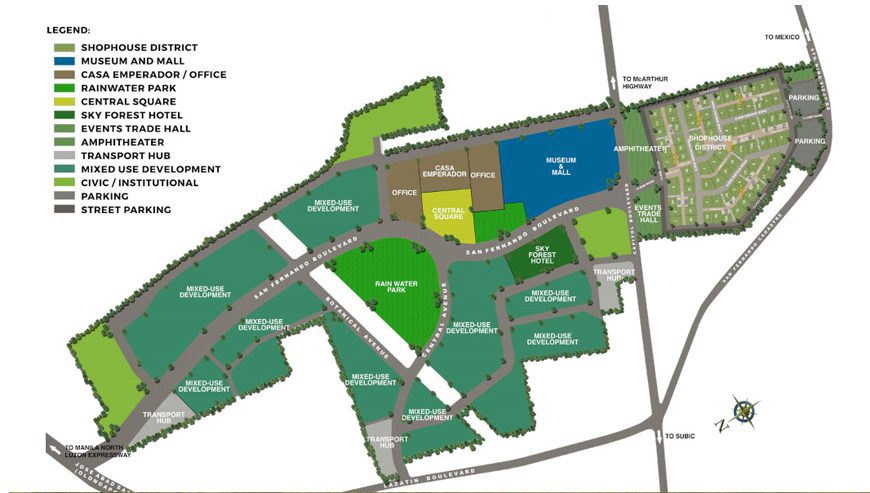
| • | Capital Town by Megaworld (San Fernando): This development focuses on attracting business process outsourcing (BPO) companies by providing modern office spaces and high-speed internet connectivity. It also integrates heritage preservation efforts, incorporating Pampanga’s rich cultural history. |
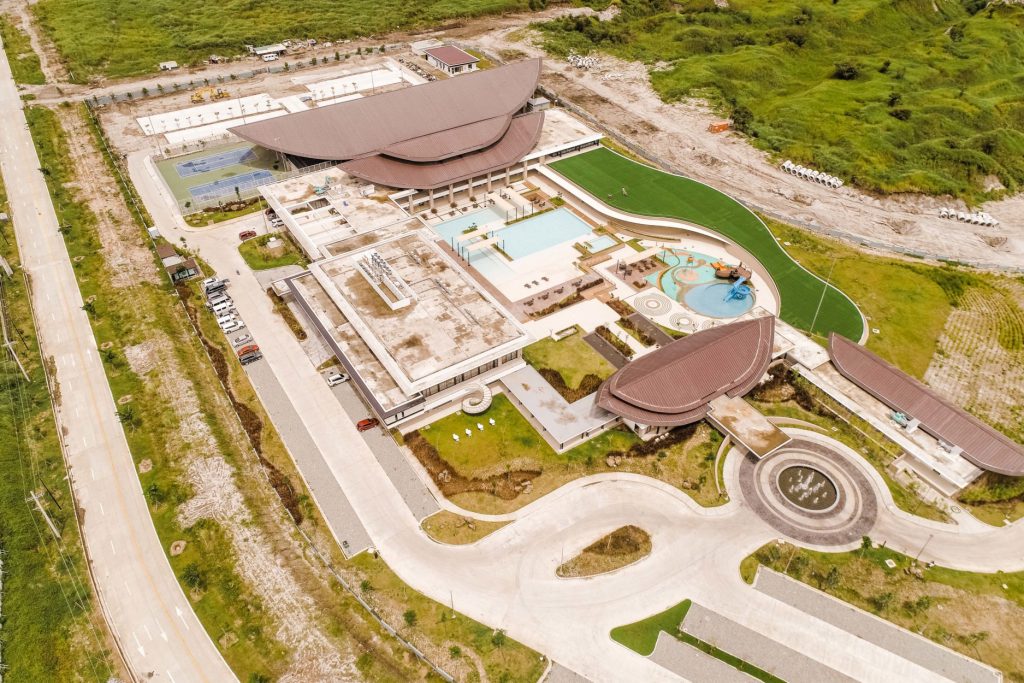
| • | Alviera by Ayala Land (Porac): Alviera takes a multi-pronged approach, encompassing leisure and tourism with its world-class hotels and theme parks, alongside industrial development through its economic zones. This blend caters to both business and leisure interests. |
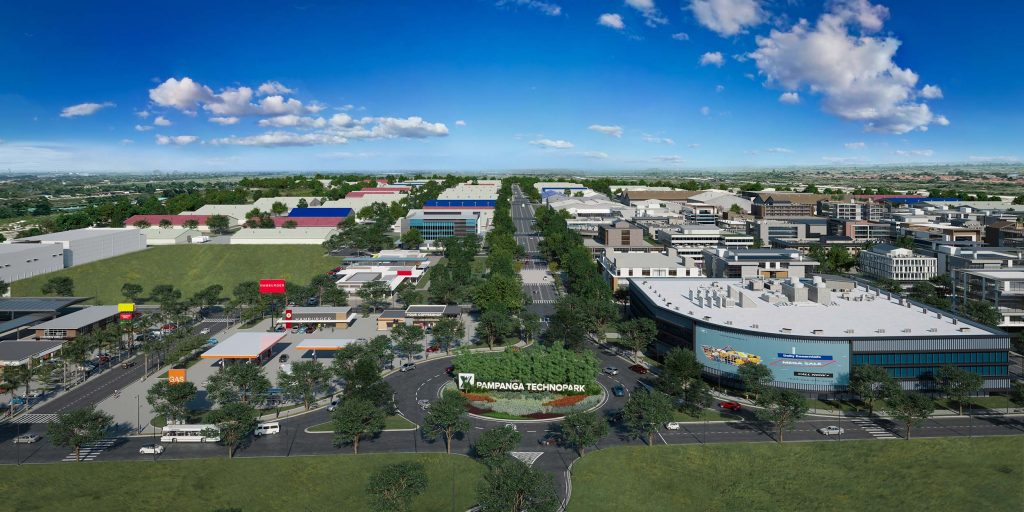
| • | Pampanga Technopark by Ayala Land: As the name suggests, this development actively targets technology-based companies by offering state-of-the-art facilities and supportive infrastructure, creating an ideal environment for innovation. |

| • | New Clark City by BCDA (Clark Freeport Zone): This ambitious project envisions a smart, green, and disaster-resilient metropolis within the Clark Freeport Zone. It aims to become a hub for government offices, businesses, and research institutions, fostering economic growth and attracting international investments. |
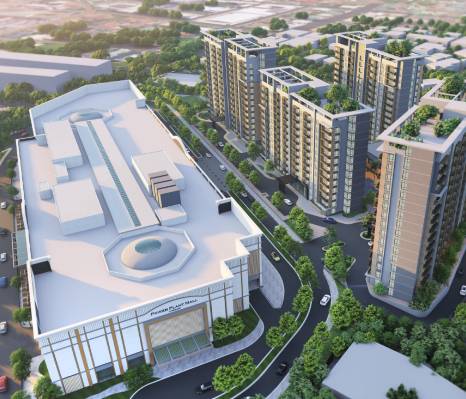
| • | Rockwell at Nepo Center by Rockwell Land (Angeles City): Rockwell Land brings its signature brand of luxury living to Angeles City with this development. It offers high-end residential condominiums, retail spaces, and upscale amenities, catering to those seeking a sophisticated lifestyle experience. |
Bulacan
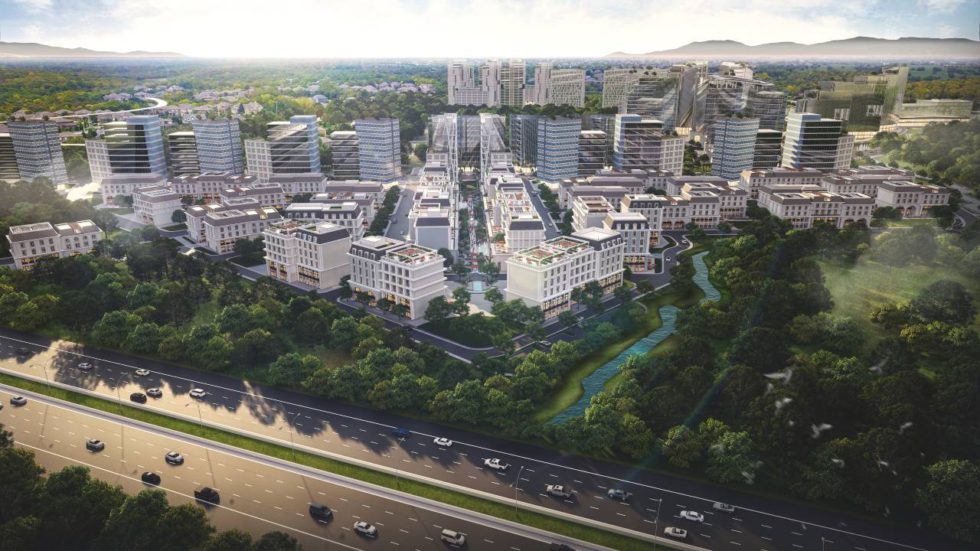
| • | Northwin Global City by Megaworld (Marilao & Bocaue): This large-scale project aspires to become a global aerocity, strategically located near the Clark International Airport. It will feature business process outsourcing (BPO) offices, commercial centers, and residential areas designed to attract businesses and residents seeking a dynamic and well-connected environment. |
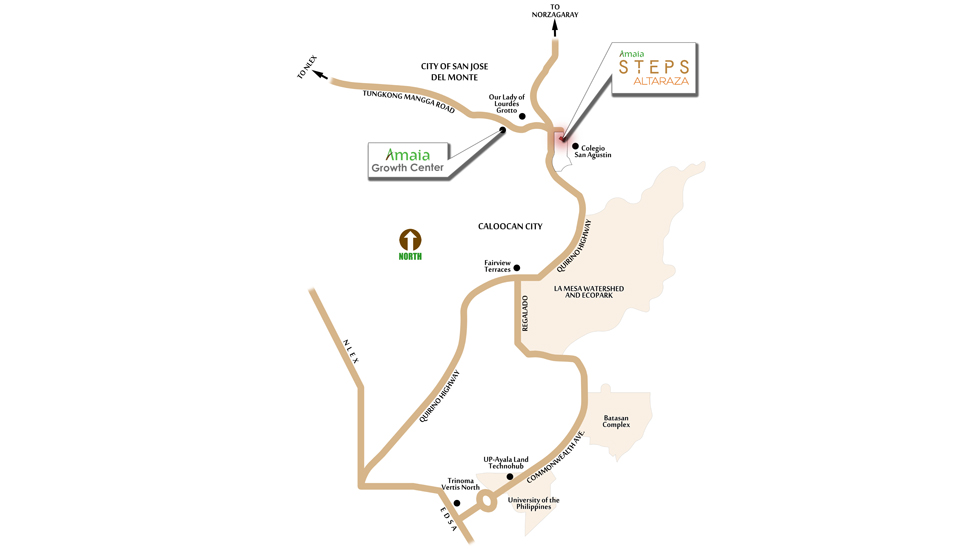
| • | Altaraza by Ayala Land (San Jose del Monte): Sustainability is at the forefront of Altaraza’s development plan. It aims to create a self-sufficient and environmentally conscious community with green spaces, walkable areas, and energy-efficient buildings. Residents will enjoy a holistic lifestyle with easy access to essential services and amenities. |
These are just a few examples of the exciting developments transforming Central Luzon. By catering to diverse needs and offering a blend of business, leisure, and residential options, these mixed-use projects are poised to play a significant role in the region’s economic growth and create vibrant new communities for residents to thrive.
B. Rizal
Rizal province, bordering Metro Manila to the east, is also witnessing a rise in mixed-use developments. While the scale may be slightly smaller compared to Central Luzon, these projects offer attractive options for those seeking a convenient and well-connected lifestyle:
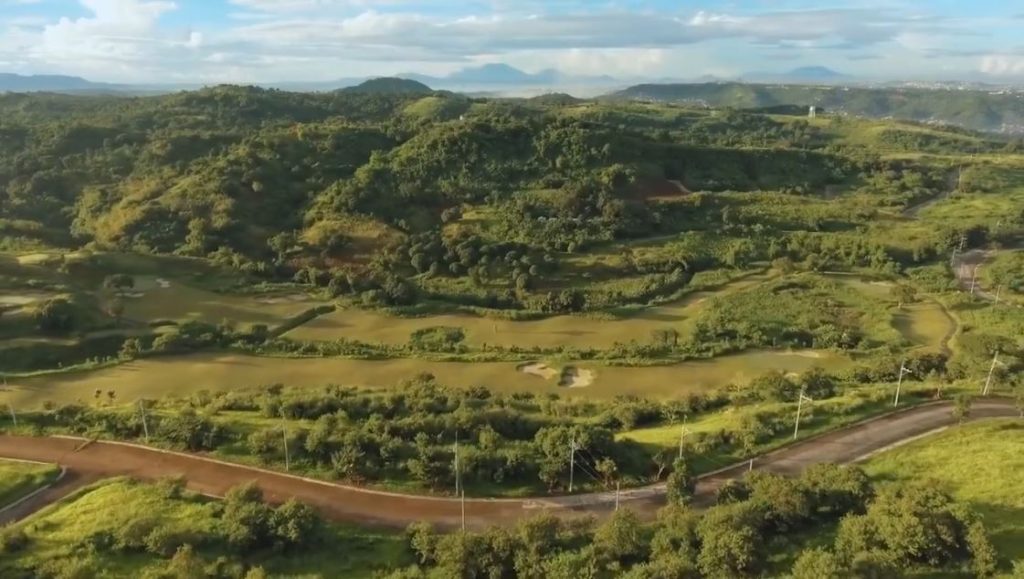
| • | Eastland Heights by Megaworld (Antipolo): This development provides a mix of residential and commercial spaces in Antipolo. Residents can enjoy the convenience of having shops, restaurants, and other amenities within walking distance, while still being close to Metro Manila for work or leisure. |
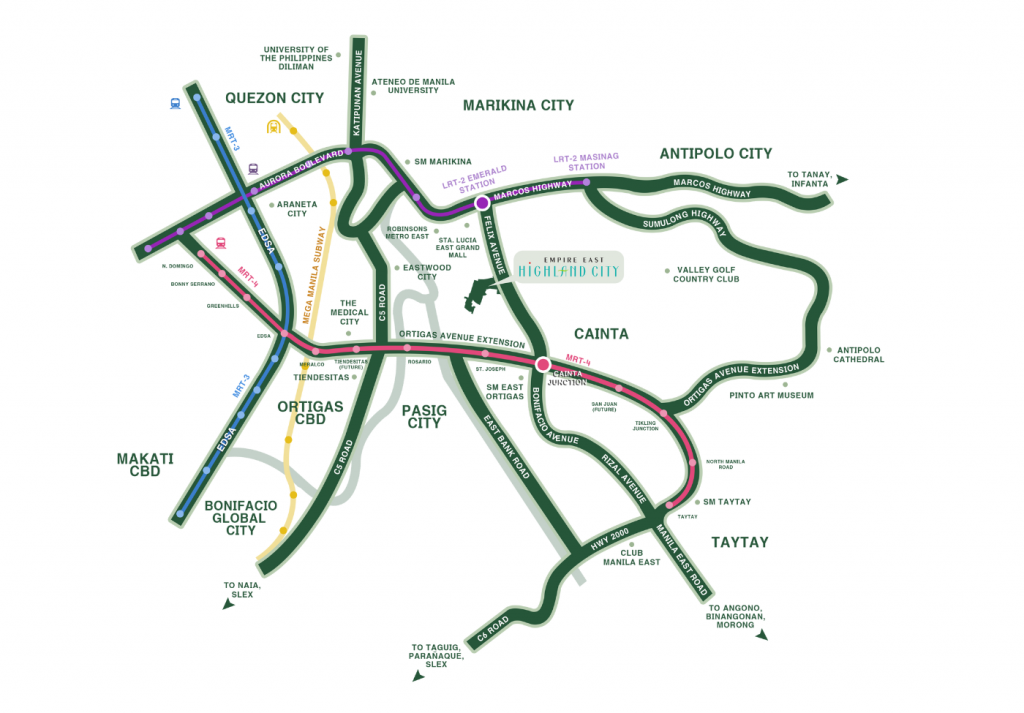
| • | Highland City by Megaworld (Cainta): Entertainment and leisure take center stage at Highland City in Cainta. This development features shopping malls, cinemas, and other recreational facilities, catering to those seeking a dynamic and vibrant community. Residential options are also available, offering a complete lifestyle package within a single location. |
These developments in Rizal cater to the growing demand for convenient and well-planned communities within easy reach of Metro Manila. By offering a blend of residential and commercial spaces, they provide residents with the best of both worlds: access to urban amenities and a comfortable living environment.
C. South Luzon (Cavite & Laguna)
South of Metro Manila, Cavite and Laguna, are a powerful duo driving the rise of mixed-use developments. Their proximity to the metropolis, coupled with ongoing infrastructure projects like the Cavite-Laguna Expressway (CALAX), transforms them into prime locations for businesses and residents seeking a relaxed yet well-connected lifestyle. Let’s explore some of the key developments in these regions:
Cavite
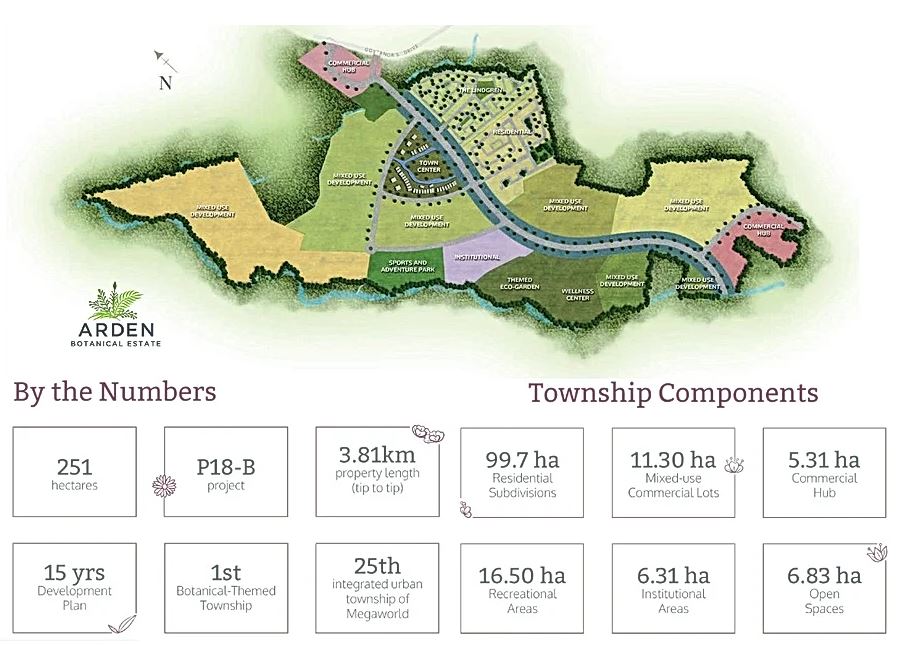
| • | Arden Botanical Estate by Megaworld (Trece Martires): This development prioritizes sustainability, offering a refreshing approach to community living. Residents can enjoy eco-friendly features like parks, gardens, and open spaces, fostering a connection with nature. Homes are designed to be energy-efficient, promoting a healthier environment. |
| • | Maple Grove, Suntrust Ecotown, and Southwoods City by Megaworld (various locations): Megaworld has carved out a significant presence in Cavite with these diverse offerings. |
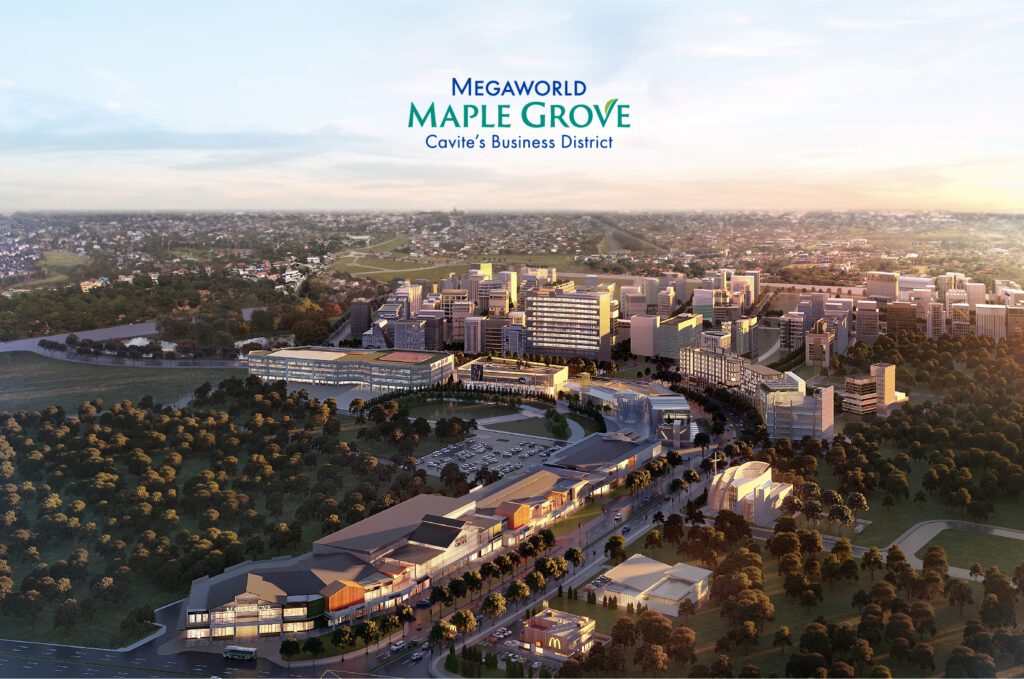
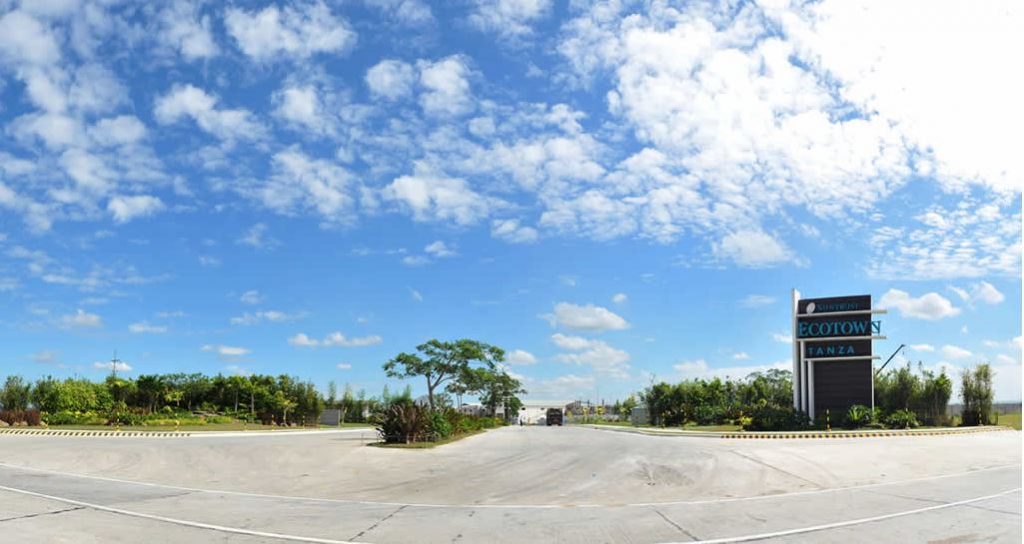
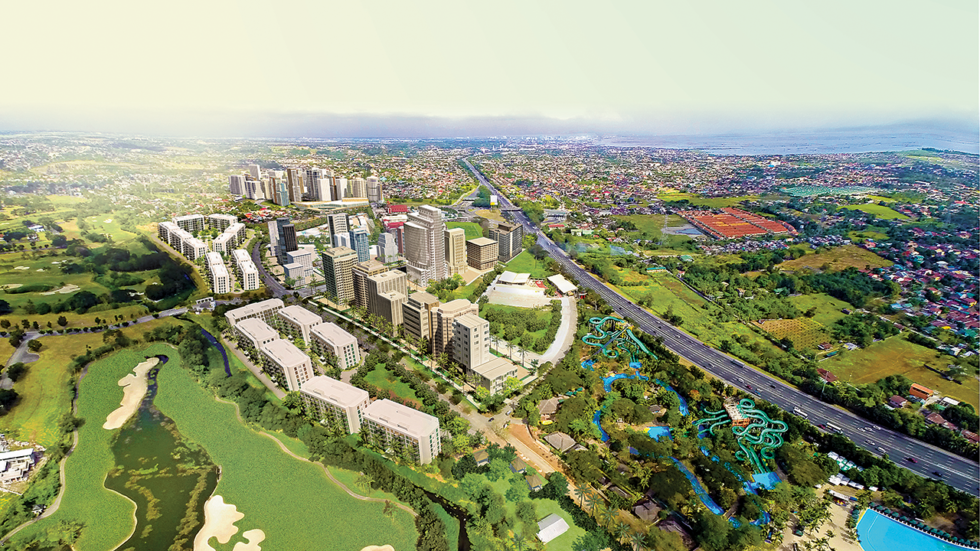
| ◦ Maple Grove (General Trias): This development focuses on creating a vibrant business and commercial hub, attracting companies, and offering modern office spaces. | |
| ◦ Suntrust Ecotown (Tanza): Similar to Arden Botanical Estate, Suntrust Ecotown prioritizes sustainability and eco-friendly living. It integrates green building practices and renewable energy sources, aiming to create a harmonious balance between residential spaces and the environment. | |
| ◦ Southwoods City (Biñan, Laguna / Carmona, Cavite): Spanning across both Cavite and Laguna, Southwoods City offers a comprehensive lifestyle package. It boasts residential areas, commercial districts, schools, and leisure facilities, catering to families and professionals seeking a well-rounded community experience. |
Laguna
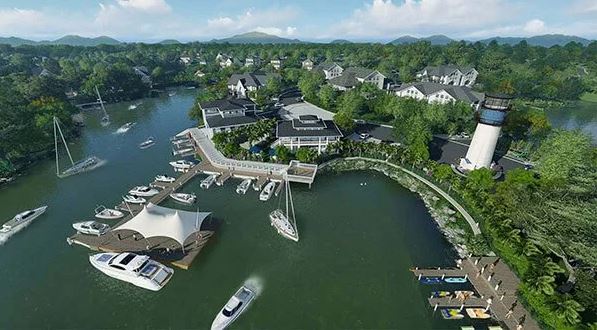
| • | The Hamptons Caliraya by Megaworld (Cavinti): This development capitalizes on Laguna’s natural beauty, offering a leisure and tourism-oriented community near Taal Lake. Residents can enjoy a resort-like atmosphere with amenities like water sports activities and scenic views. |
Both Cavite & Laguna
While Megaworld has a strong presence, Ayala Land also significantly contributes to the region’s development landscape:
| • | Vermosa, Evo City, Cresendo, and Cavite Technopark by Ayala Land (various locations): Ayala Land presents a diverse range of projects in Cavite. |
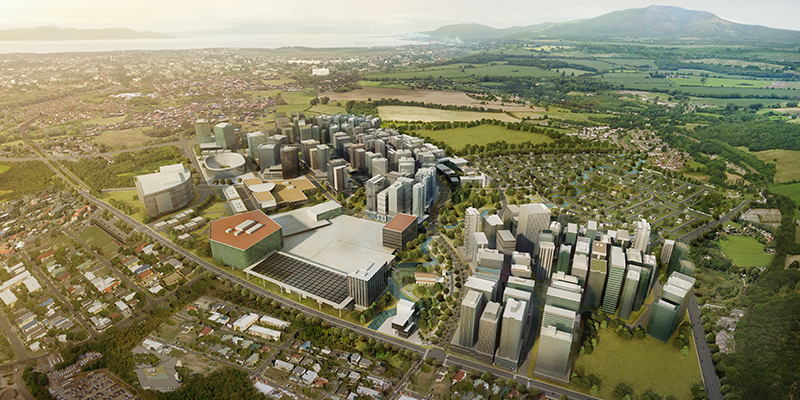
| ◦ Vermosa: This development offers a blend of residential villages, commercial areas, and leisure facilities, catering to a variety of lifestyles. | |
| ◦ Evo City: Industrial development takes precedence in Evo City, attracting businesses with its economic zones and state-of-the-art infrastructure. | |
| ◦ Cresendo: This project offers a mix of residential and commercial spaces, creating a vibrant community environment. | |
| ◦ Cavite Technopark: Similar to its counterpart in Pampanga, Cavite Technopark aims to become a hub for technology and industrial companies, providing a supportive environment for innovation and growth. |
These are just a few examples of the many mixed-use developments transforming Cavite and Laguna. With their strategic location, diverse offerings, and focus on sustainability, these projects are creating exciting new destinations for businesses and residents alike, contributing to the economic and social development of the region.
D. Batangas
Further south lies Batangas, a province known for its scenic landscapes and historical sites. While the scale of mixed-use developments might be smaller compared to other regions, Batangas offers attractive options for those seeking a more relaxed and nature-oriented lifestyle:
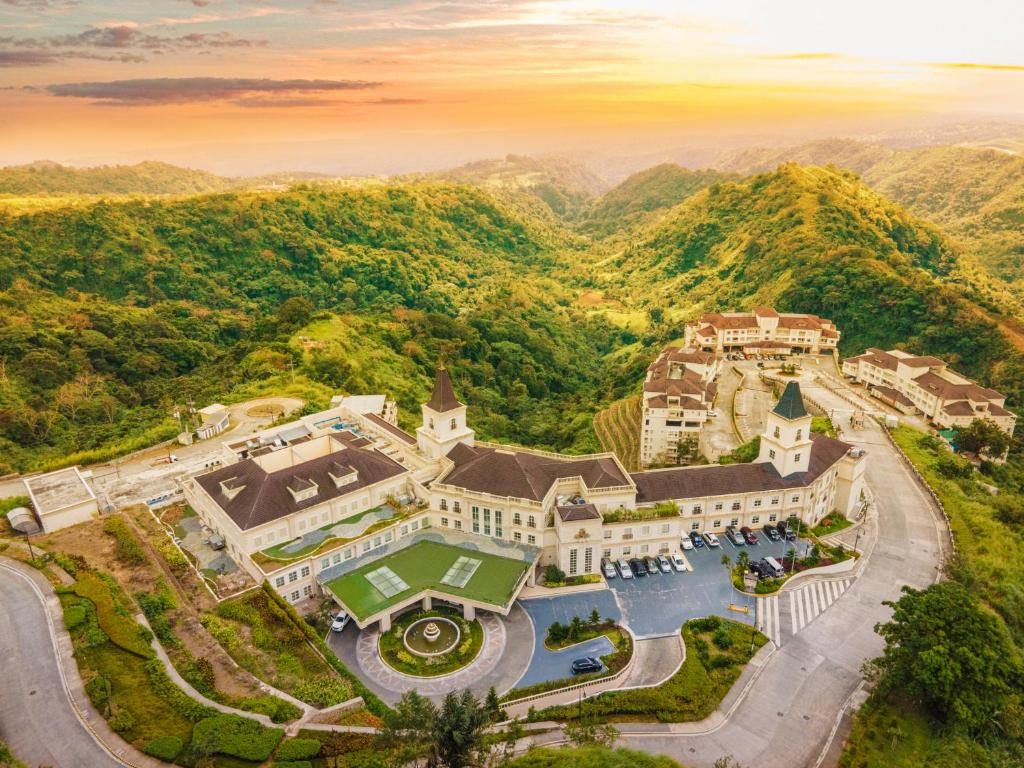
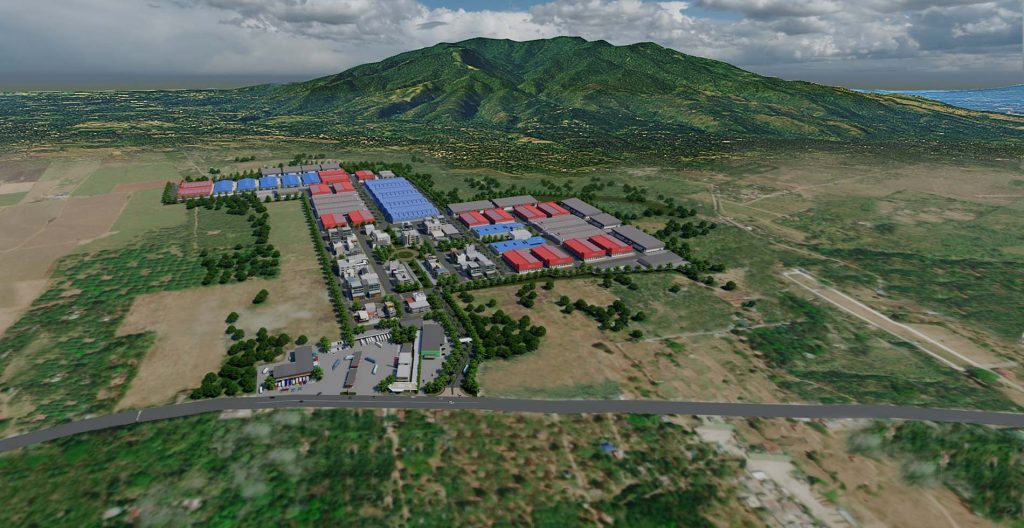
| • | Twin Lakes by Megaworld (Laurel): Nestled near Taal Lake, this development focuses on creating a leisure and residential community. Residents can enjoy stunning lake views alongside modern amenities and a relaxed atmosphere. |
| • | Batangas Technopark by Ayala Land (Lipa City & Batangas City): Similar to its counterparts in other regions, Batangas Technopark aims to attract technology and industrial companies. With its strategic location and supportive infrastructure, it offers a promising environment for businesses seeking growth opportunities. |
These developments in Batangas showcase the potential for the province to become a destination for both leisure and industry. By leveraging its natural beauty and strategic location, Batangas can attract residents and businesses seeking a more relaxed and nature-oriented alternative to densely populated Metro Manila.
The Future of Decentralization: Opportunities and Challenges
The rise of mixed-use developments and townships outside Metro Manila presents a wealth of opportunities for the Philippines. Here’s a closer look at the potential benefits and some key challenges to consider:
Opportunities:
- Decongestion of Metro Manila: By encouraging businesses and residents to relocate to outlying areas, these developments can help alleviate the strain on Metro Manila’s infrastructure and resources. This can lead to improved traffic flow, reduced pollution levels, and a more manageable cost of living in the National Capital Region.
- Economic Growth in Regions: These projects present a significant opportunity for economic growth in previously underdeveloped regions. By attracting businesses and investments, they can create new jobs, boost local economies, and stimulate infrastructure development.
- Improved Quality of Life: Living in a self-contained community with integrated work, living, and leisure spaces can significantly improve residents’ quality of life. Reduced commute times, access to essential services and amenities, and a focus on sustainability can contribute to a healthier and more balanced lifestyle.
Challenges:
- Keeping Up with Infrastructure Needs: The rapid development of these townships necessitates equally rapid infrastructure development. This includes reliable transportation networks, efficient power and water supply, and robust telecommunications infrastructure. Failure to keep pace can create bottlenecks and hinder the success of these projects.
- Ensuring Inclusivity and Accessibility: While these developments offer a promising future for many, it’s crucial to ensure they are inclusive and accessible to all income brackets. Strategies are needed to ensure that affordable housing options are available and that public transportation effectively connects these communities to existing urban centers.
- Environmental Sustainability: The focus on sustainability needs to be more than a marketing slogan. Developers must prioritize green building practices, renewable energy sources, and waste management solutions to ensure these developments truly live up to their promise of a healthier environment.
Moving Forward:
The government, developers, and citizens all have a role to play in shaping the future of these mixed-use developments. By prioritizing sustainable practices, ensuring inclusive growth, and investing in necessary infrastructure, these projects can become vibrant new urban centers that contribute to a more balanced and sustainable development across the Philippines.
The Road Ahead
The landscape of Philippine development is undergoing a significant transformation. The rise of mixed-use developments and townships outside Metro Manila signifies a shift towards a more decentralized and sustainable future. These self-contained communities offer a holistic lifestyle package, promising to improve the quality of life for residents while decongesting the capital.
From the business process outsourcing hubs of Pampanga to the leisure destinations of Laguna, these developments cater to diverse needs and create exciting opportunities for regional growth. However, challenges remain in ensuring infrastructure keeps pace, fostering inclusive development, and prioritizing environmental sustainability.
By addressing these challenges and continuing to invest in these projects, the Philippines can unlock the full potential of this decentralization movement. These vibrant new urban centers have the potential to become engines of economic growth, create a more balanced development strategy, and ultimately contribute to a brighter future for the entire nation.
For readers interested in learning more about specific developments, a quick online search using the HousingInteractive.com.ph Property Search portal will provide detailed information and resources.
List of Property Developments
Pampanga
- Capital Town by Megaworld, City of San Fernando, Pampanga
- Alviera by Ayala Land, Porac, Pampanga
- Pampanga Technopark by Ayala Land
- New Clark City by Bases Conversion and Development Authority, Clark Freeport Zone, Pampanga
- Rockwell at Nepo Center by Rockwell Land, Angeles City, Pampanga
Bulacan
- Northwin Global City by Megaworld, Marilao and Bocaue, Bulacan
- Altaraza by Ayala Land, San Jose del Monte, Bulacan
Rizal
- Eastland Heights by Megaworld, Antipolo, Rizal
- Highland City by Megaworkd, Cainta, Rizal
Cavite
- Arden Botanical Estate by Megaworld, Trece Martires, Cavite
- Maple Grove by Megaworld, General Trias, Cavite
- Suntrust Ecotown by Megaworld, Tanza, Cavite
- Southwoods City by Megaworld, Biñan, Laguna / Carmona, Cavite
- Vermosa by Ayala Land, Cavite
- Evo City by Ayala Land, Cavite
- Cresendo by Ayala Land, Cavite
- Cavite Technopark by Ayala Land, Cavite
Laguna
- The Hamptons Caliraya by Megaworld, Cavinti, Laguna
- Nuvali by Ayala Land, Sta. Rosa, Laguna
- Laguna Technopark by Ayala Land, Sta. Rosa and Biñan, Laguna
- Eton City by Eton Properties, Sta. Rosa, Laguna
- Greenfield City by Greenfield Development Corporation, Sta. Rosa, Laguna
- South Forbes by Cathay Land, Sta. Rosa, Laguna
Batangas
- Twin Lakes by Megaworld, Laurel Batangas
- Batangas Technopark by Ayala Land, Lipa City and Batangas City, Batangas



